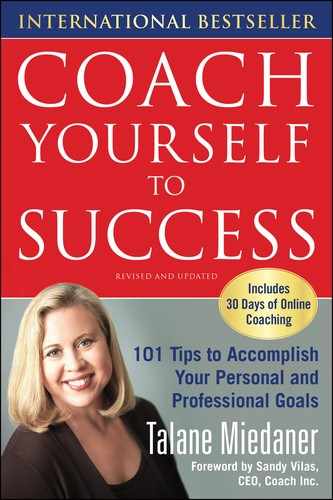TIP 13
STOP SHUFFLING AND START ORGANIZING
One must live the way one thinks or end up thinking the way one has lived.
Take the time to invest in setting up systems to make your life even easier. Many of my corporate and professional clients feel that they don’t have time to organize; they say they are too busy. As a result, they work in cluttered, crazy, paper-piled environments. Big mistake. What they don’t realize is that they will be twice as productive when they get organized. Today’s workers report that they spend almost half their working day shuffling papers around. One survey of 14 companies in 7 different industries revealed that senior executives spend 46 percent of their time on unnecessary paperwork; middle managers, 45 percent; professionals, 40 percent; and clerical support staff, 51 percent. What an appalling waste of time! It is time to stop shuffling and start organizing.
Start by blocking off one hour a week strictly for organizing, systematizing, or automating—not for doing the actual work. You might spend this hour setting up a system to handle a manual procedure. For example, you might spend an hour training your assistant in how to do a task that you have been doing or designing a computer spreadsheet that will automatically calculate what you’ve been doing by hand. Set up direct debit for your bills instead of writing checks month after month. The time you invest up front to set up a system will pay back huge dividends in future time saved.
The more you automate, systematize, and organize, the more time you’ll have for the interesting projects. I’ve read numerous books on organization (being a messy desk person myself) and, with all the different techniques and tips on offer, the only truly significant difference between the people with clean desks and the people with messy desks is 15 minutes a day spent tidying away the papers. That’s the secret. Invest 15 minutes a day filing papers, tossing out old papers, or just clearing off your desk, and you too will join the ranks of the clean desk people! Book it into your schedule at the end of the day each day right now to start this habit. Set a kitchen timer and go to it.
The first step is to separate the backlog. You can do this by getting a box and putting all the backlog of old papers into it. Spend a few minutes quickly reviewing for anything that might need immediate attention. The rest can go in the backlog box. Do the same for e-mails. Spend a few minutes pulling all important action items in your in-box into an action folder. Then move all the remaining e-mails into a folder labeled “Backlog.” You’ll have instantly cleared out your e-mail in-box and can now start fresh and keep it clear on a daily basis. Set aside a specific time each day that you will devote to handling your backlog. The beauty of this method is that you will be motivated to keep your in-box clear when it has only the current stuff in it. Set a personal rule that you’ll never have more than 20 items in your e-mail in-box. You may also discover that the backlog isn’t all that important and can be either archived or deleted. The average office worker has a backlog of about 40 hours of paperwork and typically spends 20 minutes every day looking for something in that pile. Use that 20 minutes deleting, filing, and automating, and you’ll gain 10 full days of work in a year.
Here is a trick I learned from one of my coaching colleagues. She couldn’t tame the paper tiger until she tossed out the inbox on her desk. What a radical concept! She discovered that not having a box to stuff papers into forced her to deal with each piece of paper daily. She used the TRAF method—Toss it, Refer it to someone else (delegate it if possible), Act on it, or File it. Things that couldn’t be handled the same day were put in an “action” file or in a file for that particular project. As a side benefit, she was able to find what she needed in a fraction of the time now that she didn’t have to sort through stacks of papers in her box. She made a policy of clearing everything off her desk every day. It gave her a sense of completion and accomplishment for the day, and the next morning she didn’t feel weighed down by the piles of paper.
One client invests an hour every morning with his assistant to go over everything that might come up during the day. Then the rest of the day goes by like a dream without problems or interruptions. Spend one hour a day organizing your work to catch up on the backlog and then only 15 minutes a day to tidy your desk to keep it clear and free. You will be thrilled at how much time this frees up. Not only will you feel happier, but you will be twice as productive the rest of the day or week. Setting aside time to organize is essential to success.
